Picture this: It’s 2025, you’re sipping your morning coffee, and your phone buzzes with a fresh market update. Your dashboard is already loaded with real-time prices, competitor news, and even a few spicy rumors scraped straight from the web. No more late-night Excel marathons or frantic copy-paste sessions. The right data just shows up—ready to power your next big move.
That’s the reality for businesses that have cracked the code on market data. I’ve spent years in the trenches of SaaS, automation, and AI, and I can tell you: the difference between a team that thrives and one that’s always playing catch-up often comes down to their data stack. The market data landscape has exploded, with new players, smarter APIs, and AI tools that can turn even the messiest website into a goldmine of insights. So, how do you pick the best market data provider for 2025? Let’s dive in.
Data-Driven Decisions in 2025: Why Market Data Matters More Than Ever
I’ve seen firsthand how data-driven organizations outpace the competition. The stats are wild: if you’re using data to steer your ship. In fact, now say analytics are mission-critical, and about .
This isn’t just a tech trend—it’s a business survival skill. , and alternative data (think web traffic, social media, satellite imagery) is growing at a . The bottom line? The right data provider isn’t just a nice-to-have—it’s your edge.

Why Choosing the Best Market Data Provider Matters
Let’s be real: picking a market data provider is like choosing a co-pilot for your business journey. The right one gets you where you want to go—faster, safer, and with fewer headaches. The wrong one? Well, you might end up lost, or worse, making decisions based on stale or incomplete info.
I’ve seen teams transform their workflow with the right data feeds. Sales can zero in on hot leads, marketing can react to competitor moves in real time, and analysts can finally stop wrestling with spreadsheets and start modeling scenarios that actually matter. I remember a content creator who needed a mountain of historical interest rate tables from a central bank. With an AI-powered tool, they scraped and compiled the dataset in minutes—no code, no tears (). That’s the kind of superpower the right provider gives you.
But if you choose poorly? Outdated data, clunky integrations, and missed opportunities. Imagine a trader acting on old prices, or a sales team chasing leads that have already gone cold. Data quality, timeliness, and ease of integration aren’t just technical specs—they’re the difference between winning and losing.
And it’s not just for the techies. Modern providers are making it easier for non-technical teams to plug data into their tools—think Excel, Google Sheets, or even your CRM. That means your whole team can be more agile, informed, and, dare I say, happier.
Key Criteria for Comparing Market Data Providers
Not all market data providers are created equal. Here’s how I size them up:
1. Data Coverage & Types
Does the provider cover the markets and data types you need? Some are stock and ETF specialists, others focus on bonds, options, or even alternative data like social sentiment or web analytics ().
2. Real-Time vs Historical Data
Do you need real-time streaming data for trading, or is end-of-day/historical data enough for your research? Some providers excel at ultra-low-latency feeds, while others are better for bulk downloads ().
3. Open API and Integration
In 2025, an is a must. Look for RESTful APIs, WebSocket feeds, or direct connectors. Bonus points for Excel add-ins or no-code integrations ().
4. Data Format & Delivery
Can you get the data in the format you need—JSON, CSV, Excel, or even direct to your cloud warehouse? Flexibility here is huge ().
5. Quality, Accuracy & Reliability
Look for providers with a track record of clean, validated data. Some offer SLAs or uptime guarantees. User reviews and free trials are your friend ().
6. Pricing & Scalability
Are you paying per API call, per dataset, or on a subscription? Some, like Twelve Data and Alpha Vantage, have affordable or even free plans (). Others, like Bloomberg, are more of a “bring your wallet” situation ().
7. Compliance & Data Licensing
Make sure the provider’s data is legally sourced and compliant with regulations like GDPR/CCPA (). For web-scraping tools, stick to public data and respect site terms.
8. Ease of Use & Support
Especially for non-technical users, a good UI and strong support make all the difference. Some platforms offer no-code interfaces or even AI assistants ().
Bottom line: Match the provider’s strengths to your needs. If you need real-time, broad market coverage, you’ll pick differently than if you want a quick, no-code tool for niche web data.
Thunderbit: Bridging Market Data and Web Intelligence
Let’s talk about Thunderbit for a second (yes, I’m biased—I helped build it, but hear me out). Thunderbit is an that lets you turn any website into structured data—no code, no drama. It’s not just for the techies; it’s for anyone who’s ever thought, “Why can’t I just get this data into Excel already?”
What makes Thunderbit special?
- AI Suggest Fields: The AI scans your page and recommends what to extract—names, prices, dates, you name it ().
- Natural Language Prompts: Just tell it what you want (“Extract product name, price, and rating”), and Thunderbit sets up the scraper ().
- Subpage & Pagination Scraping: It can click through links, handle infinite scroll, and pull everything into one neat table ().
- Scheduled Scraping: Set it and forget it—schedule scrapes for daily, weekly, or whatever fits your workflow.
- Instant Export: Export to Excel, Google Sheets, Airtable, Notion, CSV, or JSON—free, even on the basic tier ().
- Field AI Prompts: Transform, label, or translate data on the fly. Want to tag sentiment or calculate price with tax? Just add a prompt ().
- No Coding Required: Seriously, if you can use a browser, you can use Thunderbit ().
Thunderbit is perfect when you need data that isn’t available in a standard API—think niche e-commerce prices, business directories, or even government sites with no official feed. It’s not a replacement for Bloomberg if you need every tick trade on the NYSE, but it’s a game-changer for custom, ad-hoc data gathering and for empowering business users to self-serve their data needs.
Pricing? Thunderbit uses a credit-based model—free for small jobs (about 6 pages per month), and paid plans scale up affordably (). For most businesses, the cost is a rounding error compared to the time saved.
The Top 10 Best Market Data Providers for 2025
Here’s my curated list, blending the old guard with the new disruptors. Each brings something unique to the table.
1. Thunderbit — AI Web Scraping for Real-World Data
- Best for: Non-technical teams, sales, marketing, e-commerce, researchers needing custom web data.
- Strengths: AI-powered, no code, subpage/pagination handling, instant export, affordable.
- Drawbacks: Not for ultra-low-latency or massive historical datasets; not a traditional API.
-
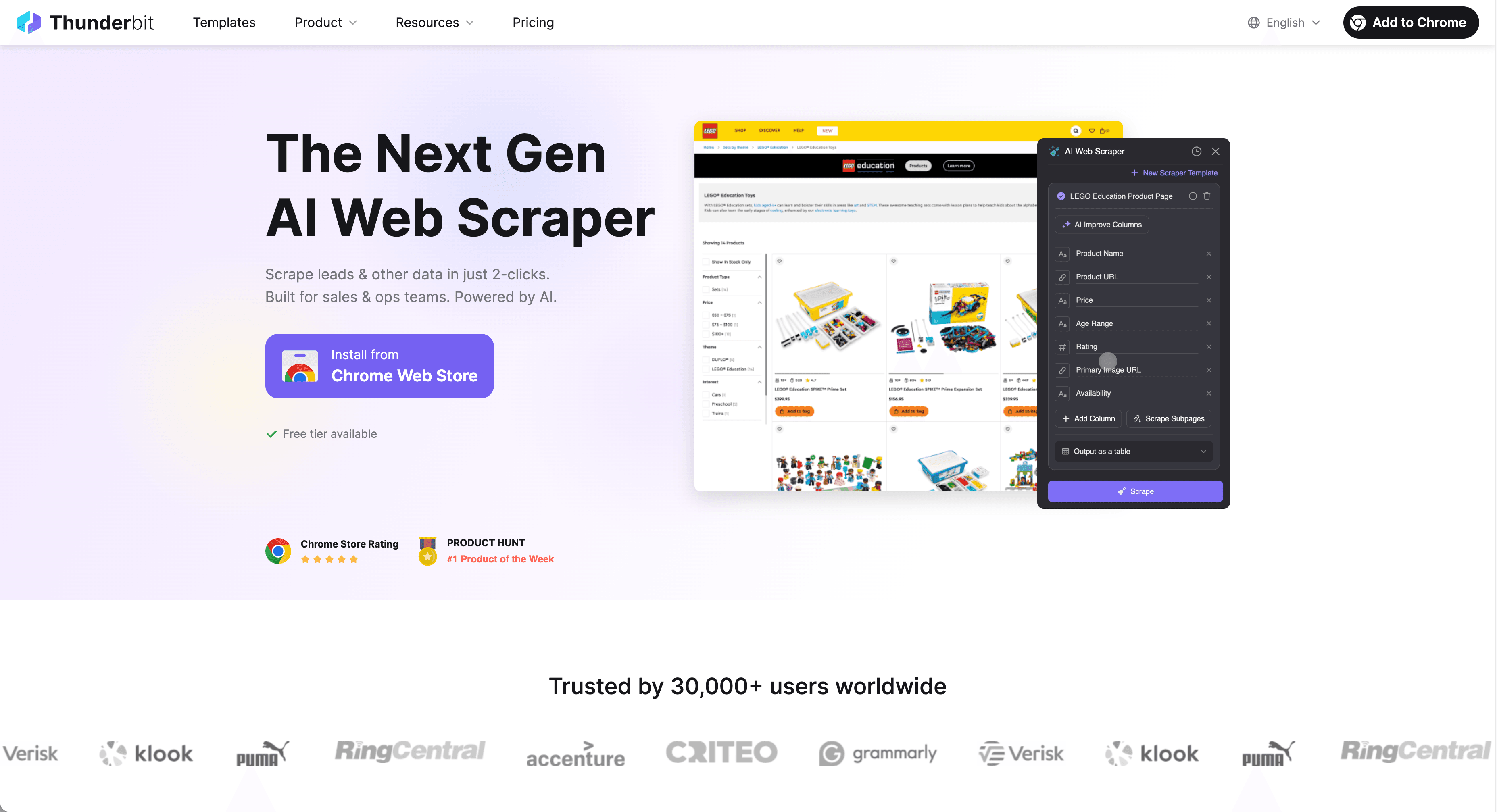
2. Bright Data — Comprehensive Datasets and Web Data at Scale
- Best for: Enterprises, fintechs, and data aggregators needing large-scale data (market + web).
- Strengths: REST APIs, proxy network, ready datasets, compliance, scale, web sentiment, e-commerce, and more ().
- Drawbacks: Can get pricey at scale, some technical setup required.
-

3. Bloomberg — The Gold Standard for Market Data
- Best for: Large financial institutions, banks, asset managers.
- Strengths: Comprehensive, real-time, multi-asset, analytics, enterprise support, BLPAPI ().
- Drawbacks: Premium pricing, overkill for smaller teams.
-
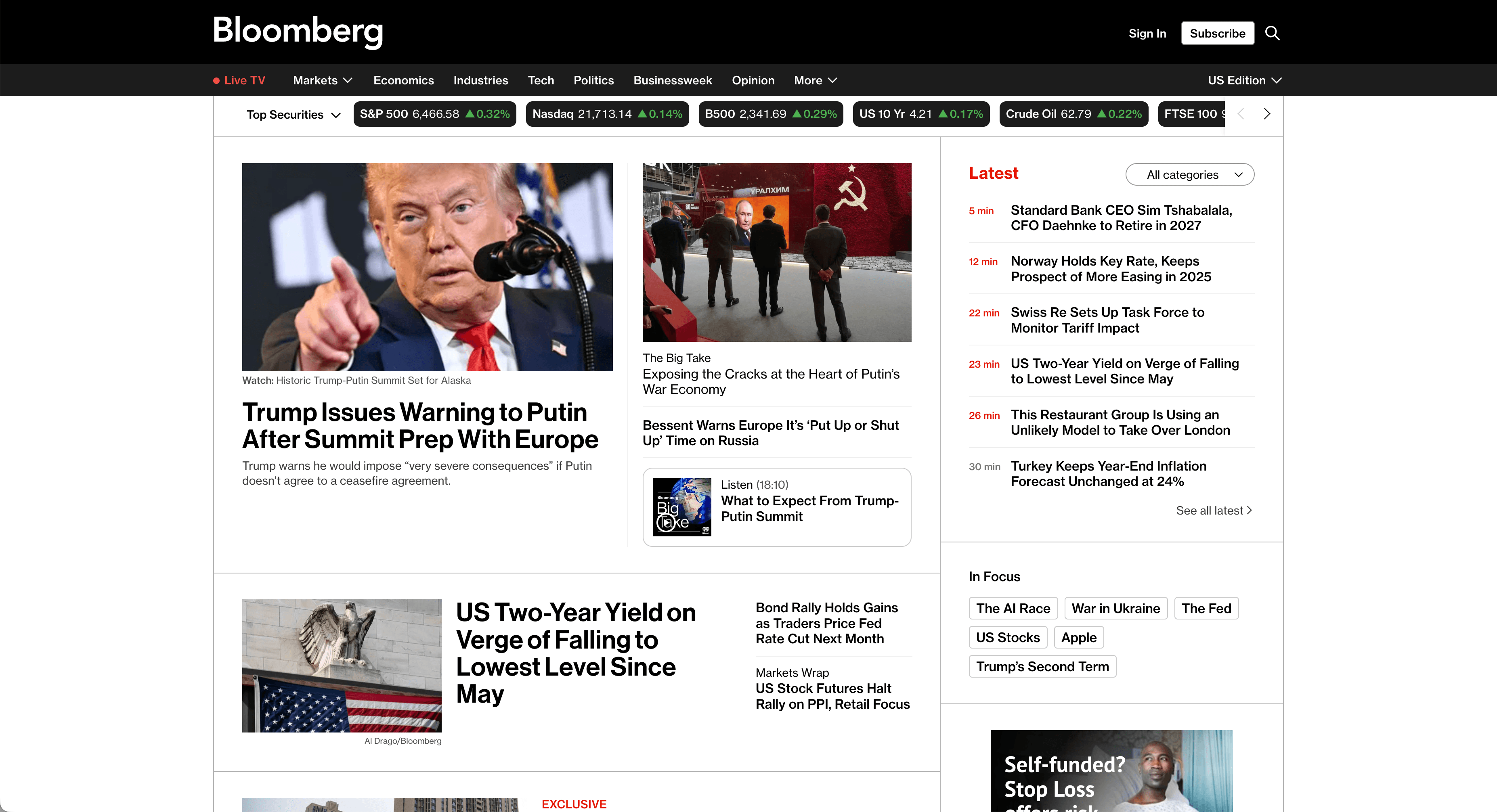
4. Datarade — The Marketplace for Data Discovery
- Best for: Analysts and data buyers comparing and sourcing niche datasets.
- Strengths: Marketplace model, transparent pricing, sample data, vendor vetting ().
- Drawbacks: Not a unified feed; integration depends on chosen vendor.
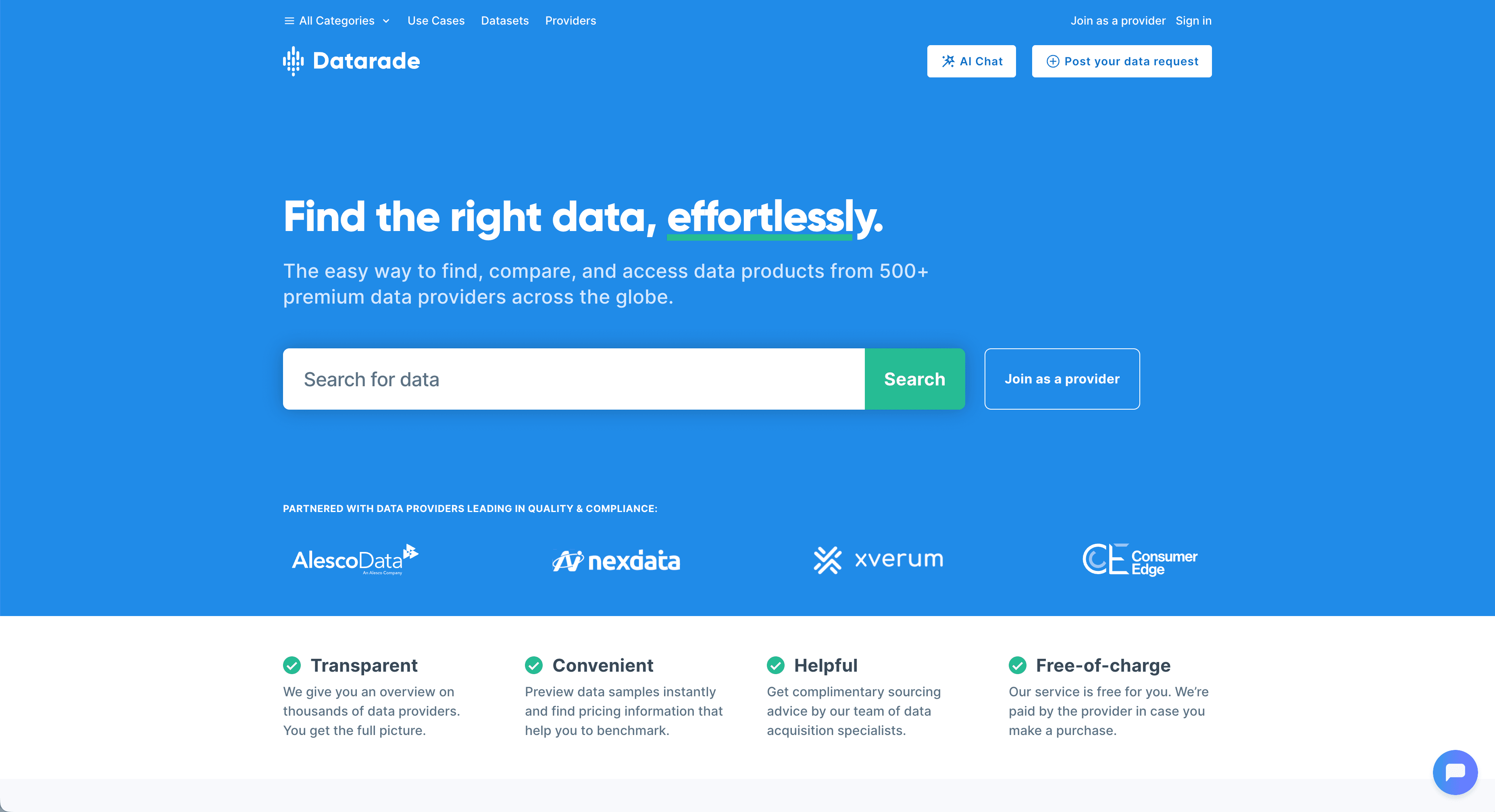
5. Exchange Data International (EDI) — Customized Global Market Data
- Best for: Ops, research, and treasury teams needing global IPO, bond, or short interest data.
- Strengths: Custom datasets, global coverage, affordable, API access ().
- Drawbacks: Limited real-time data, more traditional delivery.
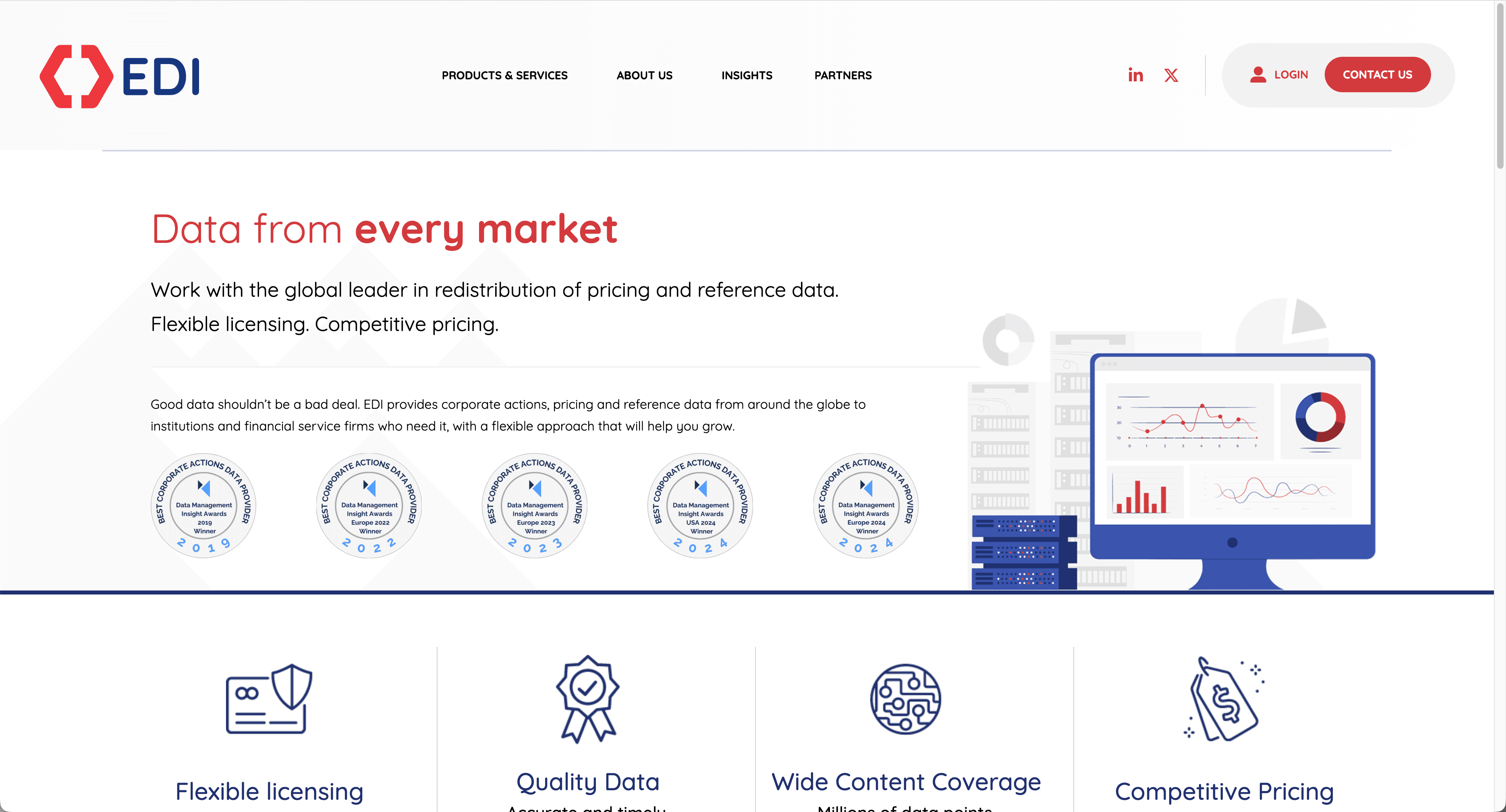
6. InfoTrie — Alternative Data and Sentiment Analytics
- Best for: Quant teams and businesses seeking alternative data and sentiment analytics.
- Strengths: News/social sentiment, NLP analytics, global coverage, API ().
- Drawbacks: Less focus on traditional price data.
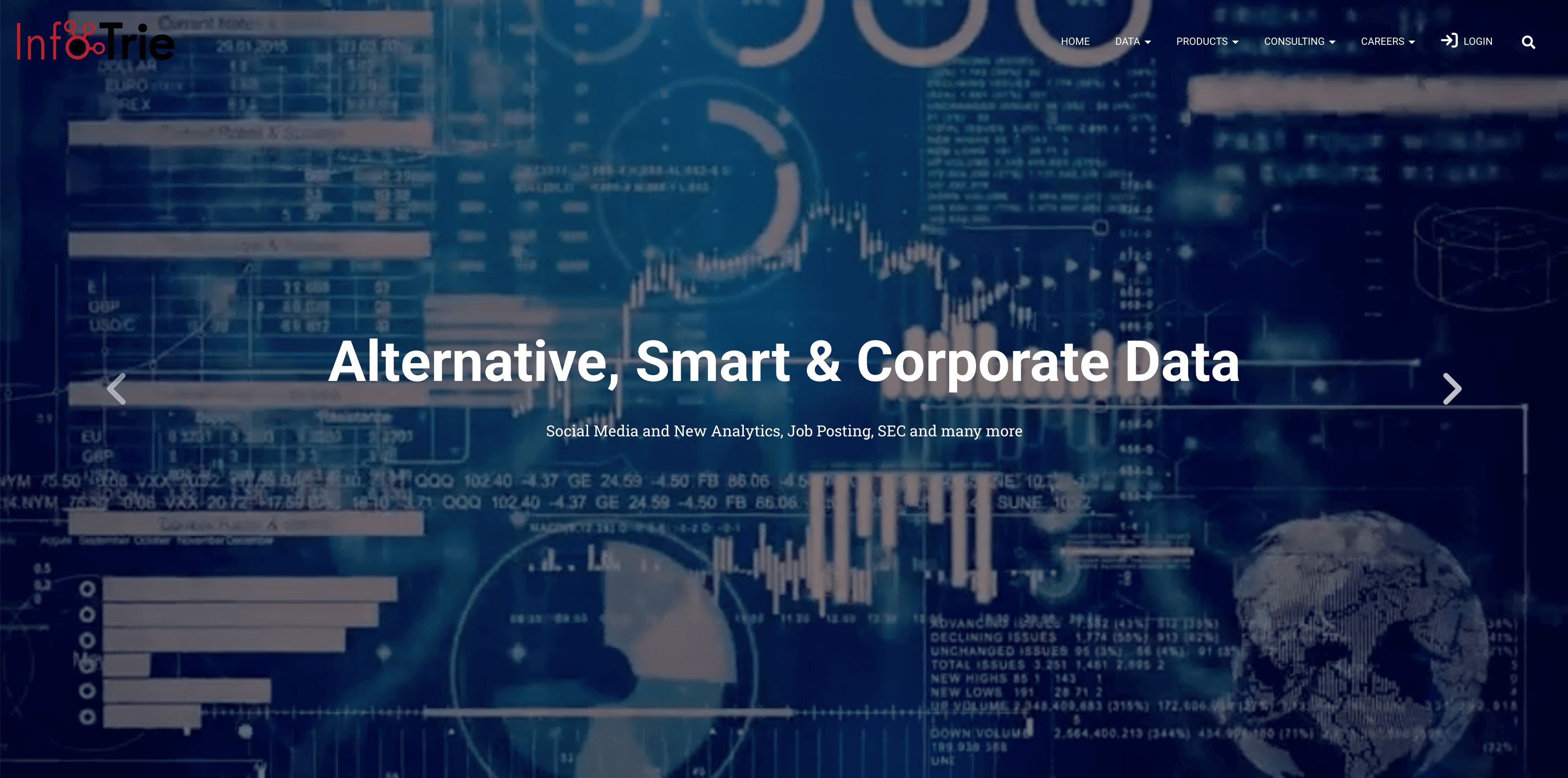
7. Cbonds — Fixed-Income Market Data Specialist
- Best for: Fixed-income investors, analysts, and researchers.
- Strengths: Bond data, indices, analytics, global coverage, API ().
- Drawbacks: Limited stock/alternative data.
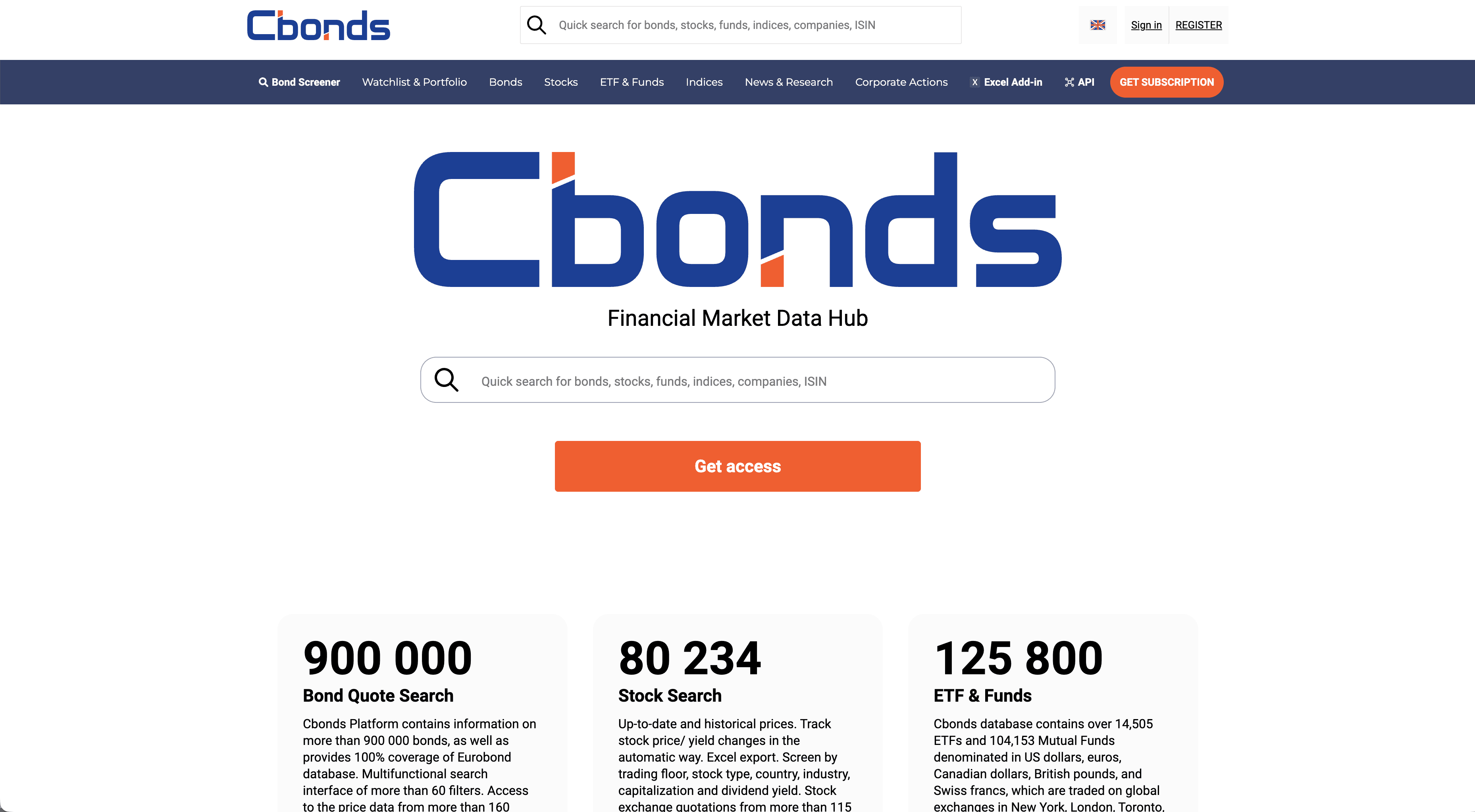
8. OptionMetrics — Options and Volatility Data Leader
- Best for: Quant researchers, risk managers, options strategists.
- Strengths: Historical options prices, IVs, Greeks, global coverage ().
- Drawbacks: Expensive, primarily historical, limited real-time.

9. Twelve Data — Accessible All-in-One Financial API
- Best for: Developers, startups, and SMEs needing easy, affordable multi-asset data.
- Strengths: REST API, WebSockets, global stocks, crypto, FX, technical indicators ().
- Drawbacks: Generalist, not as deep in niche asset classes.
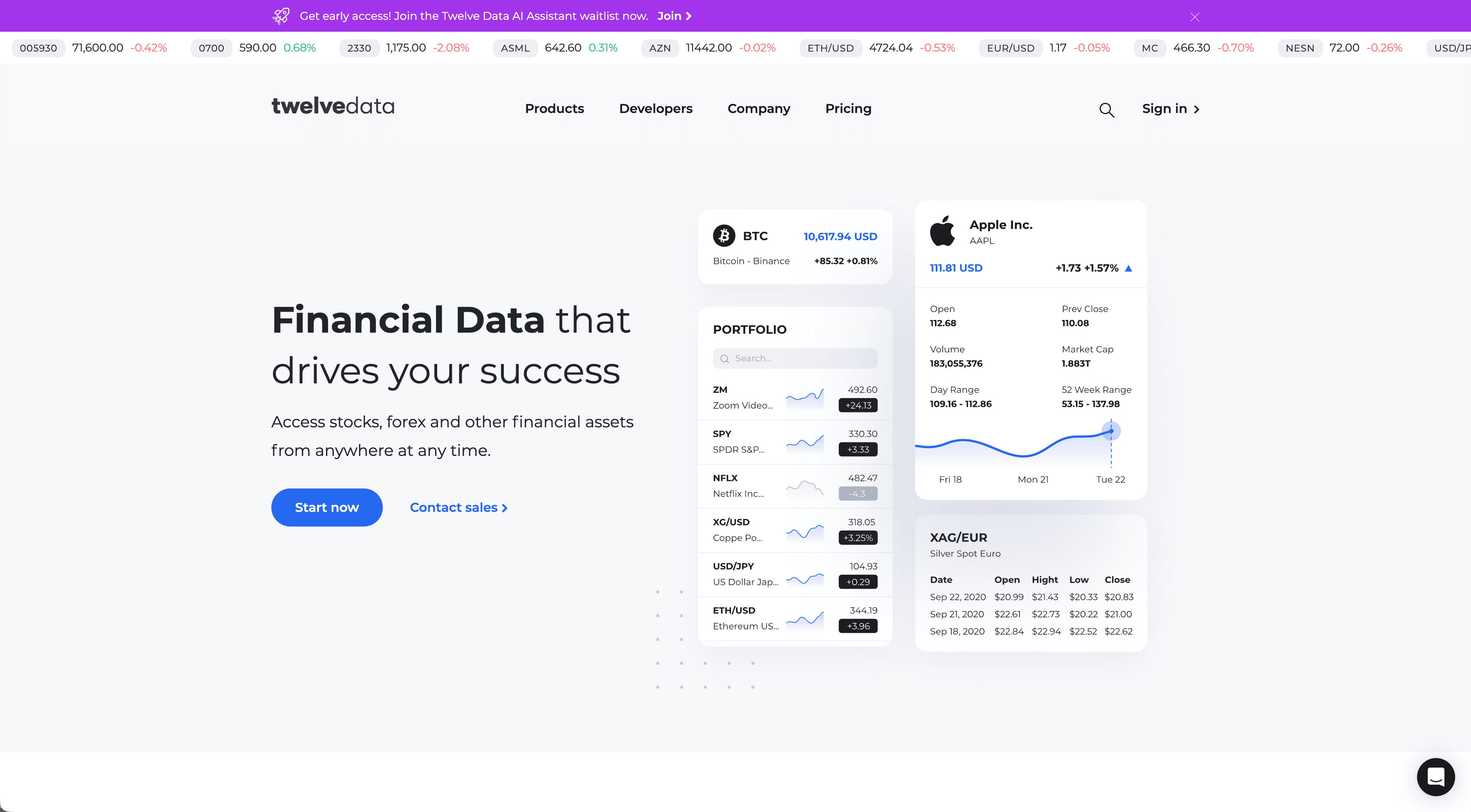
10. Kaiko — Institutional-Grade Cryptocurrency Data
- Best for: Institutions and crypto firms needing high-quality digital asset data.
- Strengths: Crypto specialist, real-time/historical, normalized, compliance, API-first ().
- Drawbacks: Crypto only, premium pricing.
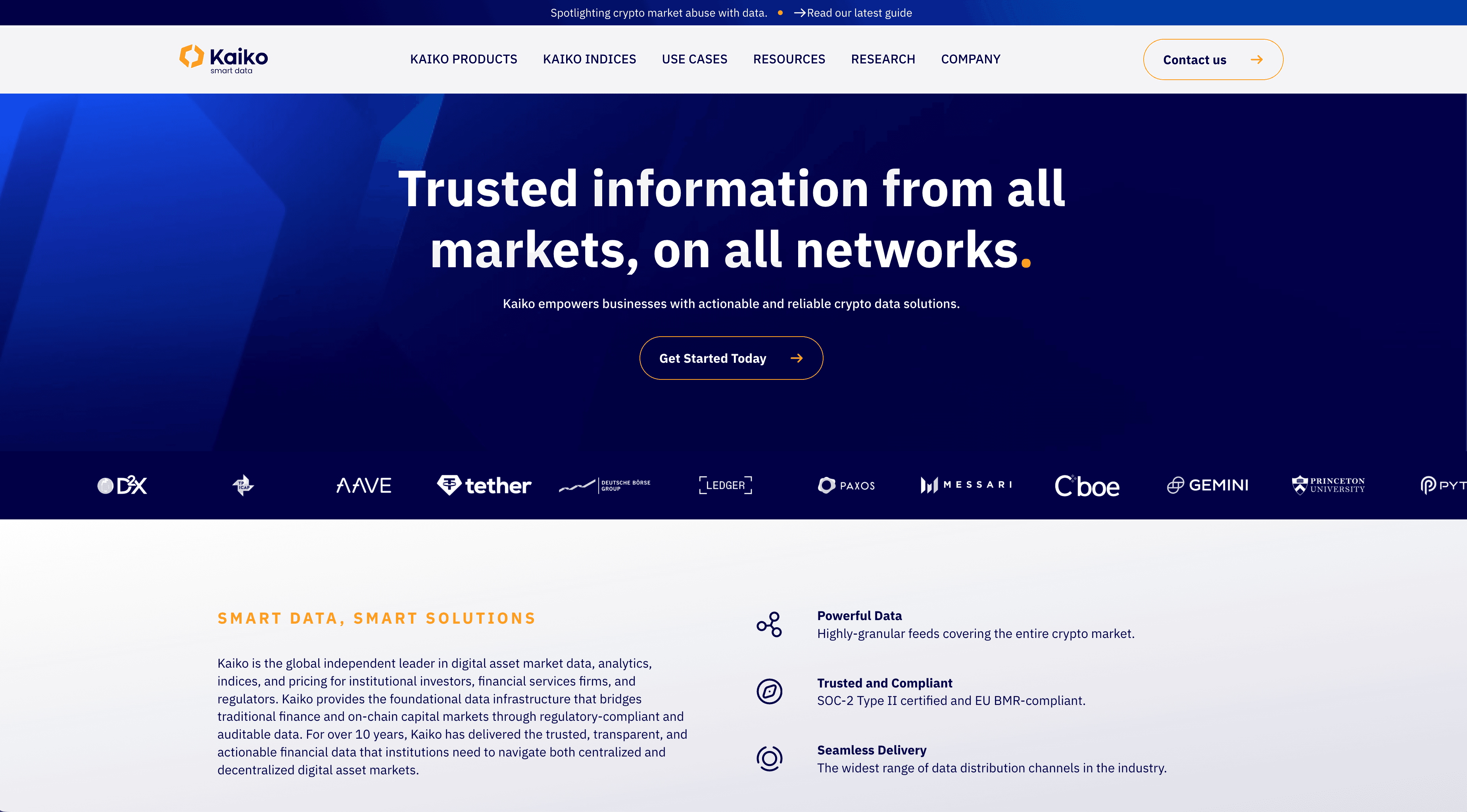
Comparing the Top Providers: Features at a Glance
Here’s a table to help you spot the differences at a glance (and maybe settle a few office debates):
| Provider | Open API | Stock Market Data | Alternative Data | Pricing Model | Compliance | Best For |
|---|---|---|---|---|---|---|
| Thunderbit | Export via Sheets/CSV | Any website (user-driven) | Yes (web, social, e-com) | Freemium credits | Public web data only | Non-technical teams, custom web data |
| Bright Data | Yes | Global stocks, options | Yes (web, sentiment, e-com) | Usage-based | GDPR/CCPA | Enterprises, large-scale data |
| Bloomberg | Yes | Comprehensive, multi-asset | Some (ESG, news) | Enterprise | Enterprise-grade | Institutions, banks |
| Datarade | Marketplace | Varies by vendor | Yes (many alt-data vendors) | Varies | Vetted vendors | Data buyers, niche datasets |
| EDI | Yes | Global IPO, bonds, reference | Minimal | Subscription | Exchange licenses | Ops/research, global market data |
| InfoTrie | Yes | Limited | Yes (sentiment, NLP) | Enterprise | GDPR | Quant/alt data |
| Cbonds | Yes | Some stocks, excels in bonds | No | Tiered | Standard | Fixed-income pros |
| OptionMetrics | Partial | Underlying stocks | No | Annual | Academic-quality | Options/volatility research |
| Twelve Data | Yes | Global stocks, ETFs, indices | Partial (crypto, FX) | Freemium | Exchange/public | Developers, startups |
| Kaiko | Yes | No (crypto only) | Yes (crypto alt-data) | Enterprise | SOC2, IOSCO | Crypto institutions |
(Sources: , , , , , , , , , ).
How Open API Access is Changing the Game
Open APIs have flipped the script on who can use market data. No longer the exclusive domain of IT or quant teams, APIs let anyone bring live data into their favorite tools. I’ve seen sales teams enrich lead lists, operations folks automate competitor price tracking, and marketers pull social sentiment into campaign reports—all thanks to easy API access ().
Even Excel and Google Sheets now support live data pulls. And with platforms like Thunderbit, you can export scraped data straight into Sheets or Airtable—effectively turning any website into an API ().
The result? Faster decisions, less manual work, and a lot fewer late nights spent wrangling CSVs. For non-technical teams, this is a game leveler. For technical teams, it’s a force multiplier.
Thunderbit vs Traditional Providers: When to Use Which
So, when should you use an AI web scraper like Thunderbit, and when should you stick with a traditional provider? Here’s my cheat sheet:
Use Thunderbit when:
- You need data from websites with no official API (think niche e-commerce, business directories, or government sites).
- You want to do quick, ad-hoc research or prototype a dataset.
- Your users aren’t coders but still need structured data.
- You need to customize, label, or transform data on the fly ().
Use traditional providers when:
- You need well-structured, standardized data (stock prices, fundamentals, etc.).
- You require high-frequency or real-time data at scale.
- Compliance and licensing are critical (e.g., for regulated trading).
- You want value-added services, analytics, or enterprise support.
Hybrid approach: Many teams use both. For example, a hedge fund might use Bloomberg for prices and Thunderbit to scrape sentiment from forums. An e-commerce team might use an API for general prices and Thunderbit for competitor promotions. Thunderbit is great for rapid prototyping or filling in gaps that traditional providers miss ().
Conclusion: Choosing the Best Data Provider for Your Needs in 2025
There’s no one-size-fits-all answer. The best market data provider is the one that fits your use case, budget, and technical comfort zone. Here’s my advice:
- If you need everything, and budget isn’t an issue: Go with Bloomberg or a similar all-in-one provider ().
- If you want to add web insights or alternative data: Layer in Thunderbit or InfoTrie ().
- If you’re a startup or small team: Twelve Data or similar API-first providers are affordable and easy to use ().
- If you need specialized data: Go with the specialist—Cbonds for bonds, Kaiko for crypto ().
Test before you commit: Most providers offer free trials or sample data. Get your hands dirty, involve your end-users, and see what fits.
Mix and match: Don’t be afraid to use multiple providers. It’s common to use Thunderbit for web data, a core API for prices, and maybe InfoTrie for sentiment. Just keep an eye on overlapping costs.
Future-proof: Think about where your needs are headed. If you might need real-time or new asset classes, pick a provider that can grow with you.
Support matters: Good documentation and responsive support can save you days of pain.
Final thought: The real win isn’t just having data—it’s having the right data, at the right time, in the right hands. With the options and strategies above, you’re set up to turn the flood of 2025’s market data into actionable insight.
Ready to try a new approach? and see how easy it is to turn any website into structured data. Or check out more guides on the for deep dives, comparisons, and practical tips.
Here’s to making your next data-driven decision the best one yet.
References: , , , , , , , , .
FAQs
1. Why is choosing the right market data provider so important in 2025?
The right market data provider ensures you get accurate, timely, and relevant information to drive business decisions. In 2025’s fast-moving markets, poor data quality or slow updates can lead to missed opportunities, outdated strategies, and costly mistakes.
2. What key factors should I consider when comparing market data providers?
Evaluate providers based on data coverage, real-time vs. historical availability, open API access, data formats, quality/reliability, pricing, compliance, and ease of integration. The ideal provider should align with your specific industry needs and workflow.
3. How does Thunderbit differ from traditional market data providers?
Thunderbit is an AI-powered web scraper that lets non-technical users extract and structure data from virtually any website—perfect for custom or niche data not available through standard APIs. Traditional providers, on the other hand, excel in delivering standardized, regulated, and often real-time financial data.
4. Can I use multiple market data providers at the same time?
Yes. Many teams adopt a hybrid approach—using a core provider (like Bloomberg or Twelve Data) for standard market data, while supplementing with tools like Thunderbit for alternative, web-based, or niche datasets. This ensures complete coverage without compromising flexibility.
5. Which providers are best for specialized needs like bonds, options, or crypto?
Specialized providers include Cbonds for fixed-income data, OptionMetrics for options and volatility analytics, and Kaiko for cryptocurrency markets. Choosing a specialist ensures depth and accuracy in your specific asset class.